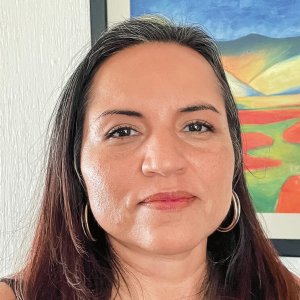
Hitting the Bullseye Through Data, Information Sharing
During prolonged metal price slumps, drilling programs are generally the first cut miners make. For some, the best way to mitigate exploration risk is to adopt the operator-explorer model. “The best business model for a mining company is to have both exploration and operations activities,” says Rodrigo Barbosa, CEO of Aura Minerals, which holds the Aranzazu concession in Zacatecas. “Operations represent a sustainable cash flow generation that can partly be used to fund exploration.”
But even these operators feel the pinch. According to S&P Global Market Intelligence in its report, World Exploration Trends, released in March 2018, deep cuts to exploration investment coincided almost exactly with the low metals prices from 2012-2015. “Although the mining industry widely accepts that exploration is important for the sector’s future, the major miners continue to allocate only a small proportion of their revenues to exploration efforts,” it says. “From 2012 to 2016, these (major miners) slashed exploration spending at a faster pace than their revenues declined, causing a fall in the group’s ratio of exploration spend to revenue, from 3.2 percent in 2012 to a 12-year low of 1.8 percent in 2016.”
Not only is mining expensive, it is highly risky as the probability of finding a deposit worthy of building a mine is low. “Out of 2,000 showings, only one becomes a mine so drilling and testing is absolutely essential to advance the creation of mines,” says James McDonald, President and CEO of exploration company Kootenay Silver. In the book Designing Optimal Strategies for Mineral Exploration, the authors point out that the Probability of commercial success = (Probability P1) x (Probability P2) x (Probability P3). P1 refers to “detection and delineation of exploration targets,” P2 to “investigating and testing of exploration targets” and P3 to “outlining ore targets within the tested exploration targets.”
WHERE TO START?
Although this seems to be a simple enough formula to follow, this is not necessarily the case. For example, Mexico’s concessioned surface area measures over 22 million hectares, according to figures from the Ministry of Economy. Within this area, there are certain methods miners use to increase the probability of finding a target. For example, often new deposits can be found close to existing or historic mines, which slightly narrows down miners’ area of interest. “The best place to find a mine is close to where other miners already discovered one,” says Kenneth McLeod, President and CEO of Sonoro Metals.
But the cost of drilling can reach into the millions of dollars. “Depending on location, rig and logistics, diamond drilling costs around US$70-120/m and the average program size for juniors can range from 1,500m to 5,000m,” says Cindy Collins, Chief Technical Officer of Geosite Technologies and Founder of Mining Technology Partners. This would mean the average cost of drilling would be over US$300,000 but she adds that exploration programs for midtier miners are much more extensive. In 2017, First Majestic Silver completed 156,500m of diamond drilling consisting of 807 holes and Fresnillo 398,000m. These high costs mean many explorers are looking for new ways to mitigate risk, which brings them to information.
THE POWER OF DATA
Data is driving new trends in optimizing mine operations, so why not in exploration too? “Over the last few decades, a tremendous amount of data has been collected from mining and exploration companies alike that goes completely unused,” says Denis Laviolette CEO and Director of Goldspot Discoveries in an interview with Mining Technology Partners. “When a company is hired to do remote sensing, it looks at various maps and creates a model out of the assay information. In this process it collects all kinds of data that goes to waste if it is not applied to the model.”
Companies spend millions collecting information for new projects but secrecy surrounding geological data means that the information never reaches its full potential. “I definitely see a lack of sharing and I see data being lost around me because there is no robust system to keep it together,” says Carrie Wong, author for Geology for Investors, a website that evaluates mineral exploration and projects for resource investors. “Every time a junior mining company goes under, information is lost.” She believes that there are three main reasons behind the resistance to share information: the high costs of obtaining data, the complex approval process that companies need to make information public and the desire to maintain a competitive edge over others.
OVERCOMING ADVERSITY
Those that dare to pioneer in the use of multidisciplinary knowledge and new tools are benefiting from smoother and faster discoveries. Rob McEwen’s Goldcorp Challenge may have been the first to pave the way by daring to open-source data that was traditionally kept under lock and key.
In 1989, Goldcorp acquired Red Lake, an underperforming gold mine that McEwen believed had the potential to produce much more. But after seeing his team of geologists struggle to find the main gold deposit, McEwen had an epiphany during a conference on how the Linux software operating system used open-sourced data, according to Don Tapscott in his book Wikinomics. McEwen decided to replicate Linux’s strategy by releasing 400MB of information onto the internet and launching a contest for contestants to submit the best solution for his mine.
The move was highly controversial considering that in 2000 the internet was still taking its first steps. But the risk proved to pay off as the competition attracted over 1,000 contestants that competed for a prize of CA$575,000. “The contestants had identified 110 targets on the Red Lake property, 50 percent of which had not been previously identified by the company,” explains Wikinomics. “Over 80 percent of the new targets yielded substantial quantities of gold. In fact, since the challenge was initiated, an astounding 8 million ounces of gold have been found.”
The book concludes that the success of the contest validates the benefits of using nontraditional strategies to solve challenges in the industry. “Perhaps the most lasting legacy of the Goldcorp Challenge is the validation of an ingenious approach to exploration in what remains a conservative and highly secretive industry,” says Tapscott. “Rob McEwen bucked an industry trend by sharing the company’s proprietary data and simultaneously transformed two lumbering exploration processes into a modem-distributed gold discovery engine that harnessed some of the most talented minds in the field.”
OPENING UP
Data in exploration is not only limited to sharing it with a broader pool of experts and requesting solutions, but also by working collaboratively across projects. Earth AI is an online mineral exploration platform that was developed through the Sydney University accelerator INCUBATE, with the aim of helping exploration companies make more and, bigger discoveries through the use of data inputs and constant learning.
Earth AI’s founder, Roman Teslyuk explains the technology in an interview with Mining Technology. “First of all, we can apply unsupervised machine learning to create a data-driven geological map,” he says. “Each rock has a unique signature, so if you identify these you can then put those signatures into a geological map. We are using our network to categorize this data in a new way. There is all this geological data and the geochemistry, and together they make a big difference to exploration.” More information means a substantial improvement in mining companies’ capabilities to predict where future deposits lie.
Mexico is throwing its hat into the ring too as companies operating in the country are incorporating these new trends into their business models. Alejandra Torijano, Country Manager of Agilent Technologies, says, as the benefits of data sharing become clearer, Mexican miners are becoming less secretive with their information. “We feel optimistic about the future given the increasing number of opportunities to analyze data within the industry,” she says.
The efficient use of data may even become a make-or-break situation for mining companies as it turns into a standard practice. “Once measured by how well a company extracted resources, the industry’s value proposition may be shifting to how well a company acts on information to optimize production, reduce costs, increase efficiency, and improve safety,” says Deloitte’s report, Tracking the Trends 2018. “In short, data— and the ability to organize, manage, and process it—is rapidly becoming a competitive differentiator and may even spur new business models.”

















